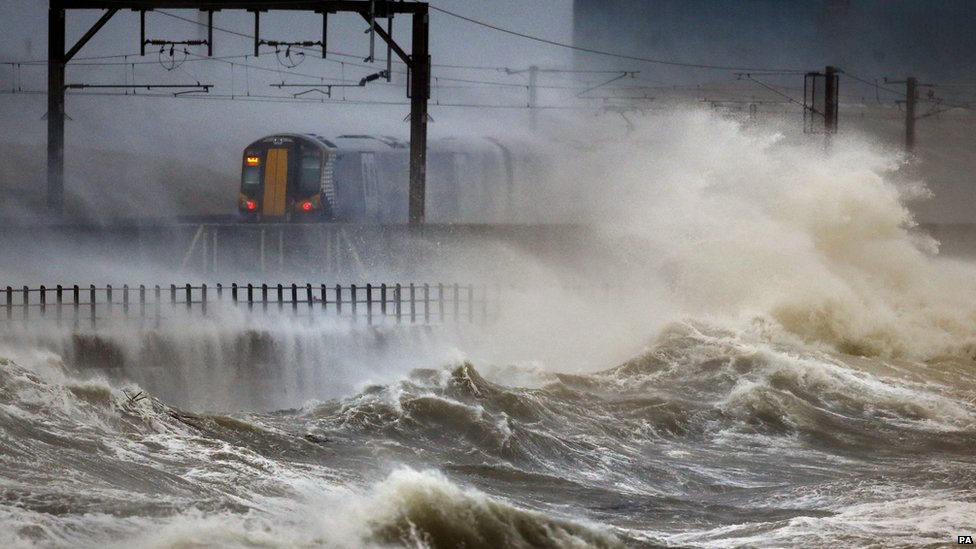You could have short sections of OHL in a couple of the tunnels as a boost.
TBH the overheads are not affected by the waves/spray as much as would be expected and its probably only a few days a year (and only for a few hours on those days) that it would be a problem anyway.
Saltcoats is electrified and gets pretty battered year on year. I doubt tunnels would be needed. Dawlish is - like every other "unelectrifiable" place on the network - a myth.
Although it's not obvious on the picture, there is actually an outer sea wall a few metres away from the wall directly protecting the railway line. Perhaps something at Dawlish might be necessary. Even if it is, it's certainly within NR's capability to install one.
--- old post above --- --- new post below ---
Its a pity the 6.25kV component was removed from the standard - it would have solved these issues really.
I suspect it's probably to do with costs and standardisation for all trains here - so you don't have to check what trains can run under what wires - and with abroad - where procuring off-the-shelf OHLE solutions is cheaper than having a dual voltage bespoke system designed.
--- old post above --- --- new post below ---
If you electrified the whole branch you would just take a feed from an existing substation on the mainlines and feed it from one end only (or even connect it to directly to the main lines with an isolated section so you could isolate the branch if needed for maintenance), one train on a branch would need the same amount of electricity as another train on the main line so no need for anything fancy.
This. I fear that the lines that would be easiest to run BMUs on in practice are also the ones that would require the least work to electrify anyway.
The only real uses I can see for it are extremely rural lines which couldn't be powered by pre-existing substations. The Far North Line, Kyle of Lochalsh and West High Lines are all perfect candidates, where if a battery can comfortably operate for 5 hours or so you would only need to install recharging stations at Inverness, Wick, Kyle of Lochalsh, Oban, Fort William and Mallaig. The highland sleeper could even have batteries installed for the last leg up to Fort William.


